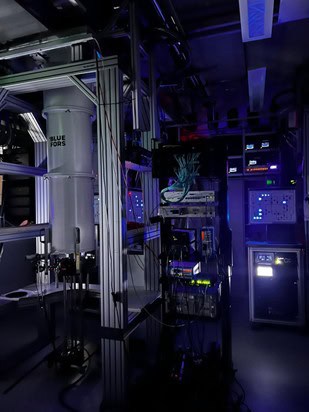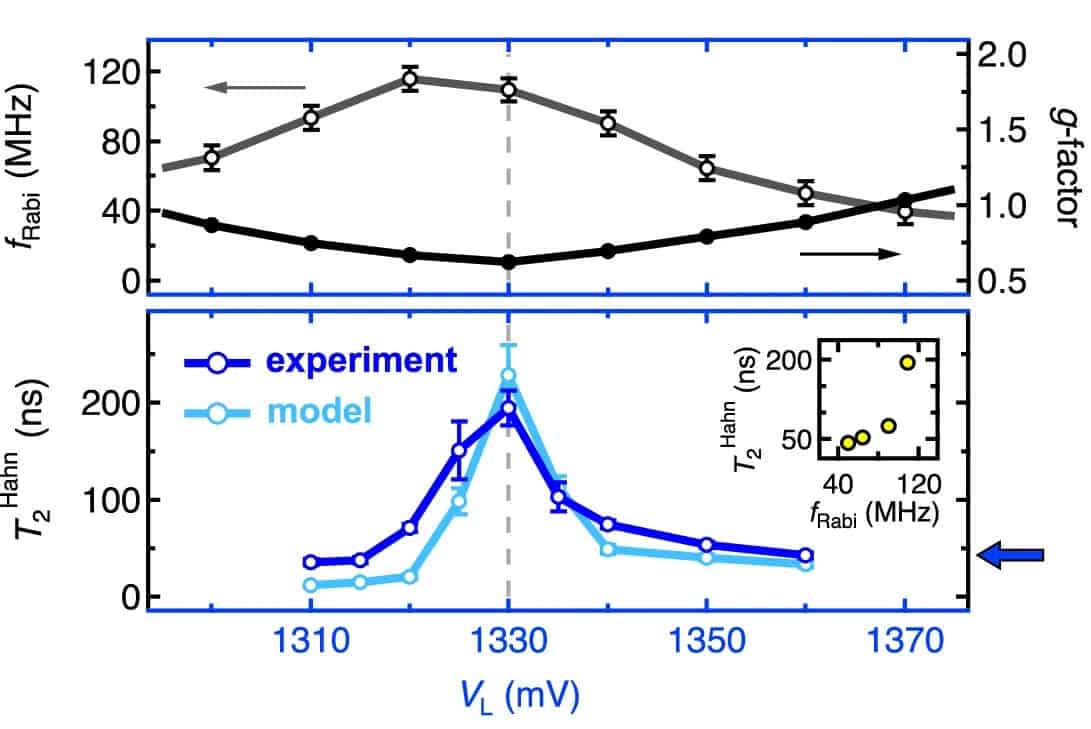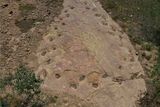Even Chihuahuas Still Have Some Wolf in Them — Here’s How Some Dogs Still Carry This DNA



A new heat engine driven by the temperature difference between Earth’s surface and outer space has been developed by Tristan Deppe and Jeremy Munday at the University of California Davis. In an outdoor trial, the duo showed how their engine could offer a reliable source of renewable energy at night.
While solar cells do a great job of converting the Sun’s energy into electricity, they have one major drawback, as Munday explains: “Lack of power generation at night means that we either need storage, which is expensive, or other forms of energy, which often come from fossil fuel sources.”
One solution is to exploit the fact that the Earth’s surface absorbs heat from the Sun during the day and then radiates some of that energy into space at night. While space has a temperature of around −270° C, the average temperature of Earth’s surface is a balmy 15° C. Together, these two heat reservoirs provide the essential ingredients of a heat engine, which is a device that extracts mechanical work as thermal energy flows from a heat source to a heat sink.
“At first glance, these two entities appear too far apart to be connected through an engine. However, by radiatively coupling one side of the engine to space, we can achieve the needed temperature difference to drive the engine,” Munday explains.
For the concept to work, the engine must radiate the energy it extracts from the Earth within the atmospheric transparency window. This is a narrow band of infrared wavelengths that pass directly into outer space without being absorbed by the atmosphere.
To demonstrate this concept, Deppe and Munday created a Stirling engine, which operates through the cyclical expansion and contraction of an enclosed gas as it moves between hot and cold ends. In their setup, the ends were aligned vertically, with a pair of plates connecting each end to the corresponding heat reservoir.
For the hot end, an aluminium mount was pressed into soil, transferring the Earth’s ambient heat to the engine’s bottom plate. At the cold end, the researchers attached a black-coated plate that emitted an upward stream of infrared radiation within the transparency window.
In a series of outdoor experiments performed throughout the year, this setup maintained a temperature difference greater than 10° C between the two plates during most months. This was enough to extract more than 400 mW per square metre of mechanical power throughout the night.
“We were able to generate enough power to run a mechanical fan, which could be used for air circulation in greenhouses or residential buildings,” Munday describes. “We also configured the device to produce both mechanical and electrical power simultaneously, which adds to the flexibility of its operation.”
With this promising early demonstration, the researchers now predict that future improvements could enable the system to extract as much as 6 W per square metre under the same conditions. If rolled out commercially, the heat engine could help reduce the reliance of solar power on night-time energy storage – potentially opening a new route to cutting carbon emissions.
The research has described in Science Advances.
The post Heat engine captures energy as Earth cools at night appeared first on Physics World.

A new microscale version of the flumes that are commonly used to reproduce wave behaviour in the laboratory will make it far easier to study nonlinear hydrodynamics. The device consists of a layer of superfluid helium just a few atoms thick on a silicon chip, and its developers at the University of Queensland, Australia, say it could help us better understand phenomena ranging from oceans and hurricanes to weather and climate.
“The physics of nonlinear hydrodynamics is extremely hard to model because of instabilities that ultimately grow into turbulence,” explains study leader Warwick Bowen of Queensland’s Quantum Optics Laboratory. “It is also very hard to study in experiments since these often require hundreds-of-metre-long wave flumes.”
While such flumes are good for studying shallow-water dynamics like tsunamis and rogue waves, Bowen notes that they struggle to access many of the complex wave behaviours, such as turbulence, found in nature.
The team say that the geometrical structure of the new wave-on-a-chip device can be designed at will using lithographic techniques and built in a matter of days. Superfluid helium placed on its surface can then be controlled optomechanically. Thanks to these innovations, the researchers were able to experimentally measure nonlinear hydrodynamics millions of times faster than would be possible using traditional flumes. They could also “amplify” the nonlinearities of complex behaviours, making them orders of magnitude stronger than is possible in even the largest wave flumes.
“This promises to change the way we do nonlinear hydrodynamics, with the potential to discover new equations that better explain the complex physics behind it,” Bowen says. “Such a technique could be used widely to improve our ability to predict both natural and engineered hydrodynamic behaviours.”
So far, the team has measured several effects, including wave steepening, shock fronts and solitary wave fission thanks to the chip. While these nonlinear behaviours had been predicted in superfluids, they had never been directly observed there until now.
The Quantum Optics Laboratory researchers have been studying superfluid helium for over a decade. A key feature of this quantum liquid is that it flows without resistance, similar to the way electrons move without resistance in a superconductor. “We realized that this behaviour could be exploited in experimental studies of nonlinear hydrodynamics because it allows waves to be generated in a very shallow depth – even down to just a few atoms deep,” Bowen explains.
In conventional fluids, Bowen continues, resistance to motion becomes hugely important at small scales, and ultimately limits the nonlinear strengths accessible in traditional flume-based testing rigs. “Moving from the tens-of-centimetre depths of these flumes to tens-of-nanometres, we realized that superfluid helium could allow us to achieve many orders of magnitude stronger nonlinearities – comparable to the largest flows in the ocean – while also greatly increasing measurement speeds. It was this potential that attracted us to the project.”
The experiments were far from simple, however. To do them, the researchers needed to cryogenically cool the system to near absolute zero temperatures. They also needed to fabricate exceptionally thin superfluid helium films that interact very weakly with light, as well as optical devices with structures smaller than a micron. Combining all these components required what Bowen describes as “something of a hero experiment”, with important contributions coming from the team’s co-leader, Christopher Baker, and Walter Wasserman, who was then a PhD student in the group. The wave dynamics themselves, Bowen adds, were “exceptionally complex” and were analysed by Matthew Reeves, the first author of a Science paper describing the device.
As well as the applications areas mentioned earlier, the team say the new work, which is supported by the US Defense Advanced Research Project Agency’s APAQuS Program, could also advance our understanding of strongly-interacting quantum structures that are difficult to model theoretically. “Superfluid helium is a classic example of such a system,” explains Bowen, “and our measurements represent the most precise measurements of wave physics in these. Other applications may be found in quantum technologies, where the flow of superfluid helium could – somewhat speculatively – replace superconducting electron flow in future quantum computing architectures.”
The researchers now plan to use the device and machine learning techniques to search for new hydrodynamics equations.
The post Microscale ‘wave-on-a-chip’ device sheds light on nonlinear hydrodynamics appeared first on Physics World.


BREMEN – The European Space Agency’s Human and Robotic Exploration (HRE) program fell short of its budget request at the ministerial, with member nations agreeing to contribute 2.98 billion euros ($3.08 billion), accounting for roughly 70% of the 3.77 billion euro ask. ESA set its overall budget at 22.1 billion euros — a significant increase […]
The post Europe’s Human and Robotic Exploration hit by budget shortfall appeared first on SpaceNews.

A Soyuz spacecraft delivered two Russian cosmonauts and one American astronaut to the International Space Station Nov. 27 for an eight-month stay.
The post Soyuz transports new crew to ISS appeared first on SpaceNews.

ESA member states are contributing more than 22 billion euros for the next three years, very close to its overall goal but with some programs faring better than others.
The post ESA raises more than 22 billion euros at ministerial appeared first on SpaceNews.

An effect first observed decades ago by Nobel laureate Arthur Ashkin has been used to fine tune the electrical charge on objects held in optical tweezers. Developed by an international team led by Scott Waitukaitis of the Institute of Science and Technology Austria, the new technique could improve our understanding of aerosols and clouds.
Optical tweezers use focused laser beams to trap and manipulate small objects about 100 nm to 1 micron in size. Their precision and versatility have made them a staple across fields from quantum optics to biochemistry.
Ashkin shared the 2018 Nobel prize for inventing optical tweezers and in the 1970s he noticed that trapped objects can be electrically charged by the laser light. “However, his paper didn’t get much attention, and the observation has essentially gone ignored,” explains Waitukaitis.
Waitukaitis’ team rediscovered the effect while using optical tweezers to study how charges build up in the ice crystals accumulating inside clouds. In their experiment, micron-sized silica spheres stood in for the ice, but Ashkin’s charging effect got in their way.
“Our goal has always been to study charged particles in air in the context of atmospheric physics – in lightning initiation or aerosols, for example,” Waitukaitis recalls. “We never intended for the laser to charge the particle, and at first we were a bit bummed out that it did so.”
Their next thought was that they had discovered a new and potentially useful phenomenon. “Out of due diligence we of course did a deep dive into the literature to be sure that no one had seen it, and that’s when we found the old paper from Ashkin, “ says Waitukaitis.
In 1976, Ashkin described how optically trapped objects become charged through a nonlinear process whereby electrons absorb two photons simultaneously. These electrons can acquire enough energy to escape the object, leaving it with a positive charge.
Yet beyond this insight, Ashkin “wasn’t able to make much sense of the effect,” Waitukaitis explains. “I have the feeling he found it an interesting curiosity and then moved on.”
To study the effect in more detail, the team modified their optical tweezers setup so its two copper lens holders doubled as electrodes, allowing them to apply an electric field along the axis of the confining, opposite-facing laser beams. If the silica sphere became charged, this field would cause it to shake, scattering a portion of the laser light back towards each lens.
The researchers picked off this portion of the scattered light using a beam splitter, then diverted it to a photodiode, allowing them to track the sphere’s position. Finally, they converted the measured amplitude of the shaking particle into a real-time charge measurement. This allowed them to track the relationship between the sphere’s charge and the laser’s tuneable intensity.
Their measurements confirmed Ashkin’s 1976 hypothesis that electrons on optically-trapped objects undergo two-photon absorption, allowing them to escape. Waitukaitis and colleagues improved on this model and showed how the charge on a trapped object can be controlled precisely by simply adjusting the laser’s intensity.
As for the team’s original research goal, the effect has actually been very useful for studying the behaviour of charged aerosols.
“We can get [an object] so charged that it shoots off little ‘microdischarges’ from its surface due to breakdown of the air around it, involving just a few or tens of electron charges at a time,” Waitukaitis says. “This is going to be really cool for studying electrostatic phenomena in the context of particles in the atmosphere.“
The study is described in Physical Review Letters.
The post Electrical charge on objects in optical tweezers can be controlled precisely appeared first on Physics World.
Earlier this autumn I had the pleasure of visiting the Perimeter Institute for Theoretical Physics in Waterloo Canada – where I interviewed four physicists about their research. This is the second of those conversations to appear on the podcast – and it is with Bianca Dittrich, whose research focuses on quantum gravity.
Albert Einstein’s general theory of relativity does a great job at explaining gravity but it is thought to be incomplete because it is incompatible with quantum mechanics. This is an important shortcoming because quantum mechanics is widely considered to be one of science’s most successful theories.
Developing a theory of quantum gravity is a crucial goal in physics, but it is proving to be extremely difficult. In this episode, Dittrich explains some of the challenges and talks about ways forward – including her current research on spin foams. We also chat about the intersection of quantum gravity and condensed matter physics; and the difficulties of testing theories against observational data.
IOP Publishing’s new Progress In Series: Research Highlights website offers quick, accessible summaries of top papers from leading journals like Reports on Progress in Physics and Progress in Energy. Whether you’re short on time or just want the essentials, these highlights help you expand your knowledge of leading topics.
The post Quantum gravity: we explore spin foams and other potential solutions to this enduring challenge appeared first on Physics World.


LONDON – London-headquartered ACME Space has unveiled plans to begin hardware tests of its balloon-launched orbital manufacturing vehicle Hyperion next year and hopes to commence commercial operations in 2027. The Hyperion Orbital Factory Vehicle (OFV) is designed to carry up to 200 kilograms to low Earth orbit (LEO), using a hydrogen-filled balloon to overcome the […]
The post ACME Space plans test run for balloon-launched space factory next year appeared first on SpaceNews.

HELSINKI — Chinese commercial launch firm Landspace is preparing to attempt the country’s first orbital launch and booster landing this weekend with its Zhuque-3 rocket. Airspace closure notices issued under the Civil Aviation Administration of China (CAAC) indicate a launch attempt from the vicinity of Jiuquan Satellite Launch Center between around 11:00 p.m. Eastern Nov. […]
The post China set for first orbital launch and landing attempt this weekend with commercial Zhuque-3 rocket appeared first on SpaceNews.

ESA and Norway have signed a letter of intent and formed a joint working group to assess the feasibility of a new ESA Arctic Space Centre.
The post ESA and Norway announce plans for an Arctic Space Centre appeared first on SpaceNews.

Qubits – the building blocks of quantum computers – are plagued with a seemingly unsurmountable dilemma. If they’re fast, they aren’t robust. And if they’re robust, they aren’t fast. Both qualities are important, because all potentially useful quantum algorithms rely on being able to perform many manipulations on a qubit before its state decays. But whereas faster qubits are typically realized by strongly coupling them to the external environment, enabling them to interact more strongly with the driving field, robust qubits with long coherence times are typically achieved by isolating them from their environment.
These seemingly contradictory requirements made simultaneously fast and robust qubits an unsolved challenge – until now. In an article published in Nature Communications, a team of physicists led by Dominik Zumbühl from the University of Basel, Switzerland show that it is, in fact, possible to increase both the coherence time and operational speed of a qubit, demonstrating a pathway out of this long-standing impasse.
The key ingredient driving this discovery is something called the direct Rashba spin-orbit interaction. The best-known example of spin-orbit interaction comes from atomic physics. Consider a hydrogen atom, in which a single electron revolves around a single proton in the nucleus. During this orbital motion, the electron interacts with the static electric field generated by the positively charged nucleus. The electron in turn experiences an effective magnetic field that couples to the electron’s intrinsic magnetic moment, or spin. This coupling of the electron’s orbital motion to its spin is called spin-orbit (SO) interaction.
Aided by collaborators at the University of Oxford, UK and TU Eindhoven in the Netherlands, Zumbühl and colleagues chose to replace this simple SO interaction with a far more complex landscape of electrostatic potential generated by a 10-nanometer-thick germanium wire coated with a thin silicon shell. By removing a single electron from this wire, they create states known as holes that can be used as qubits, with quantum information being encoded in the hole’s spin.
Importantly, the underlying crystal structure of the silicon-coated germanium wire constrains these holes to discrete energy levels called bands. “If you were to mathematically model a low-level hole residing in one of these bands using perturbation theory – a commonly applied method in which more remote bands are treated as corrections to the ground state – you would find a term that looks structurally similar to the spin–orbit interaction known from atomic physics,” explains Miguel Carballido, who conducted the work during his PhD at Basel, and is now a senior research associate at the University of New South Wales’ School of Electrical Engineering and Telecommunications in Sydney, Australia.
By encoding the quantum states in these energy levels, the spin-orbit interaction can be used to drive the hole-qubit between its two spin states. What makes this interaction special is that it can be tuned using an external electric field. Thus, by applying a stronger electric field, the interaction can be strengthened – resulting in faster qubit manipulation.

This ability to make a qubit faster by tuning an external parameter isn’t new. The difference is that whereas in other approaches, a stronger interaction also means higher sensitivity to fluctuations in the driving field, the Basel researchers found a way around this problem. As they increase the electric field, the spin-orbit interaction increases up to a certain point. Beyond this point, any further increase in the electric field will cause the hole to remain stuck within a low energy band. This restricts the hole’s ability to interact with other bands to change its spin, causing the SO interaction strength to drop.
By tuning the electric field to this peak, they can therefore operate in a “plateau” region where the SO interaction is the strongest, but the sensitivity to noise is the lowest. This leads to high coherence times (see figure), meaning that the qubit remains in the desired quantum state for longer. By reaching this plateau, where the qubit is both fast and robust, the researchers demonstrate the ability to operate their device in the “compromise-free” regime.
So, is quantum computing now a solved problem? The researchers’ answer is “not yet”, as there are still many challenges to overcome. “A lot of the heavy lifting is being done by the quasi 1D system provided by the nanowire,” remarks Carballido, “but this also limits scalability.” He also notes that the success of the experiment depends on being able to fabricate each qubit device very precisely, and doing this reproducibly remains a challenge.
The post Can fast qubits also be robust? appeared first on Physics World.

Victoria, Canada / Seoul, South Korea – November 27th, 2025 – Pacific Geomatics Limited (PacGeo), a Canadian satellite imagery distributor, today announced a strategic partnership with SI Analytics (SIA), a […]
The post Pacific Geomatics and SI Analytics Announce Strategic Partnership to Deliver Super-Resolution Capabilities Across Canada appeared first on SpaceNews.






ESA wrapped up the first day of a critical ministerial conference sounding upbeat about progress in securing funding for the next three years, despite a few warning signs.
The post ESA on ‘good track’ to secure funding despite notes of caution appeared first on SpaceNews.